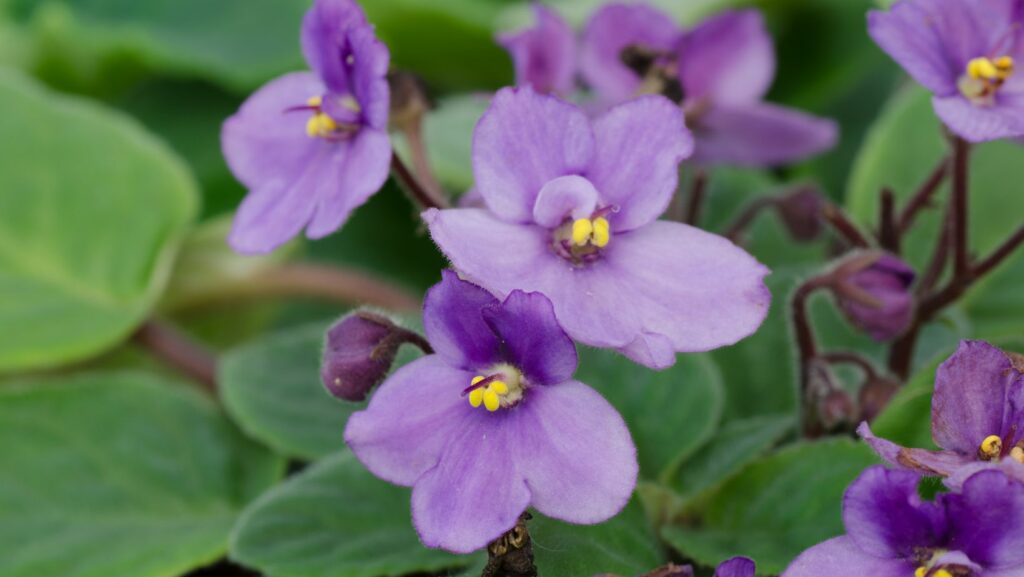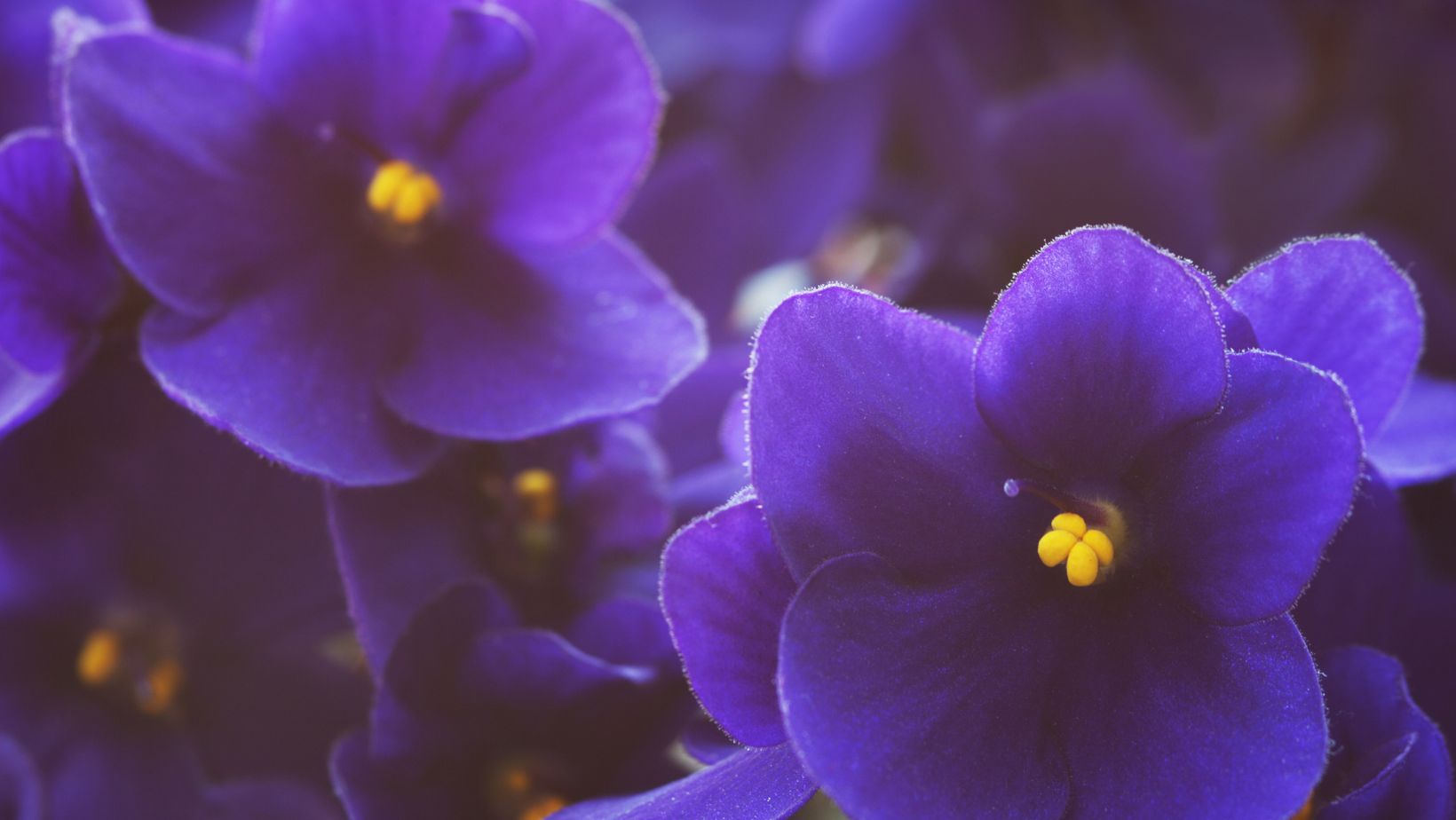If your African violet is wilting, it could be due to light or temperature stress. Here are some tips to help you get your plant back on track.
My African Violet is Wilting
There are many reasons why an African violet might wilt. The most common reason is that the plant is not getting enough light. African violets need 12-14 hours of bright, indirect sunlight each day. If the plant is not getting enough light, it will stretch and become leggy in an attempt to reach the light source. This will cause the leaves to become thinner and the stems to become longer. The plant will also produce fewer flowers.
Other causes of wilting in African violets include overwatering, waterlogged soil, high temperatures, and low humidity. If the soil is too wet, it will cause the roots to rot. This will prevent the plant from taking up water, causing it to wilt. High temperatures can also cause wilting by causing the leaves to lose moisture faster than the roots can take up water. Low humidity can cause wilting by preventing the plant from taking up water through its leaves.
Signs That Your African Violet is Wilting
African violets are fairly easy to grow, but they can be delicate and require some specific care. One of the most common problems that growers face is wilting. If you notice that your African violet is wilting, there are a few possible causes and solutions.
One of the most common reasons for wilting is light. African violets need bright, indirect light in order to thrive. If they are not getting enough light, they will begin to wilt. The solution is simple: move your plant to a brighter location.
Another possible cause of wilting is temperature. African violets prefer a warm environment, around 70 degrees Fahrenheit. If the temperature drops too low, the plants will begin to wilt. The solution is to raise the temperature of the room or create a warm environment for your plant using a grow light or heat mat.
Over watering can also cause wilting. African violets need to be watered regularly, but their roots can easily become waterlogged if they are overwatered. Be sure to allow the soil to dry out in between waterings and never let the plant sit in water. If you think your plant is being overwatered, allow the soil to dry out completely and then resume regular watering schedule.
If you have ruled out all of these potential causes and your African violet is still wilting, it may be a sign of a more serious problem such as root rot or pest infestation. These problems will require more intensive treatment and you may need to consult with a professional grower or Africa violet specialist
How to Revive a Wilting African Violet
If your African violet is wilting, it’s likely due to too much or too little water, too much or too little light, or a temperature that’s too hot or too cold. Luckily, you can revive a wilting African violet with a few simple steps.

If the leaves of your African violet are wilting and the soil is dry, it’s likely that the plant needs more water. Water the plant thoroughly, making sure that the water drains out of the bottom of the pot. Allow the soil to dry out completely before watering again.
If the leaves of your African violet are wilting and the soil is wet, it’s likely that the plant is suffering from root rot. To save the plant, remove it from its pot and carefully remove any rotting roots. Repot the plant in fresh potting mix and water it thoroughly. Allow the soil to dry out completely before watering again.
If your African violet is wilting and its leaves are yellowing, it’s likely that the plant is getting too much light. Move the plant to a location with indirect sunlight and slowly acclimate it to lower light levels over a period of a week or two.
If your African violet is wilting and its leaves are browning, it’s likely that the plant is getting too much direct sunlight. Move the plant to a location with indirect sunlight and slowly acclimate it to lower light levels over a period of a week or two.
If your African violet is wilting and its leaves are curling, it’s likely that the temperature is too hot or too cold.African violets prefer temperatures between 68-72 degrees Fahrenheit during the day and 60-65 degrees Fahrenheit at night. If possible, try to maintain these temperature ranges in your home.
How to Prevent Wilting in African Violets
Wilting is one of the most common problems with African violets (Saintpaulia ionantha). If you notice your plant starting to wilt, take steps immediately to prevent further wilting and possible death of the plant.
The most common cause of wilting in African violets is too much direct sunlight. If your plant is wilting, move it to a location that receives indirect sunlight or filtered sunlight.
If the leaves of your African violet are wilting and the soil is dry, water the plant immediately. Be sure to water African violets at the base of the plant; avoid getting water on the leaves, as this can cause leaf spot. Allow any excess water to drain from the pot; African violets do not like wet feet and will rot if left in Standing water.
If you suspect that your African violet is wilting because of too much heat, mist the leaves and try to provide a humid environment for the plant by setting it on a tray of pebbles and water.
The Ideal Light and Temperature Conditions for African Violets
African violets need bright, indirect light and a consistent temperature to thrive. They should be kept out of direct sunlight, which can cause their leaves to scorch, and away from drafts, which can cause them to wilt. The ideal temperature range for African violets is between 65 and 75 degrees Fahrenheit.

How to Create The Ideal Conditions for Your African Violets
African violets need bright, indirect light and humid conditions to thrive. If your African violet is wilting, it is likely because it is not getting enough light or humidity.
To increase the humidity around your African violet, you can try one of the following methods:
- Misting the leaves with water.
- Placing the pot on a tray of pebbles and water.
- Using a humidifier.
To increase the light, you can try moving your plant to a brighter location or using a grow light.
